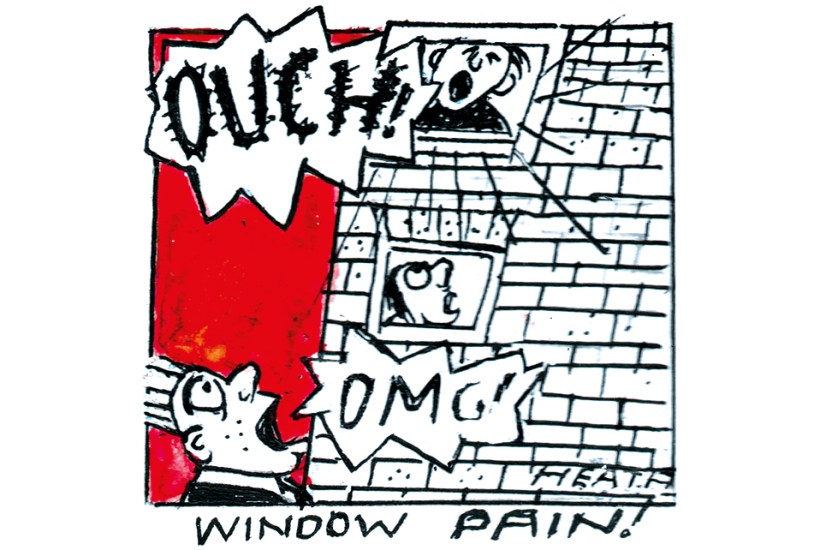Upstairs rooms in new houses are likely to be darker because building regulations now demand they should be at least 3ft 6in from the floor. Given the stingy heights of rooms these days, this reduces the glazed area. The regulators are worried about window safety. ‘Is there a plague of people falling out of them?’ asks Nicholas Boys Smith of the Create Streets pressure group. He answers himself: ‘Of course not.’
There are two ideas of a window, if the history of words were to be believed. The English language sides with the notion of a vent: ‘wind-eye’ in origin. It’s not only for Anglo-Saxon sparrows flying into mead-halls; the Spanish call it a ventana, a ventilating aperture.
The French would seem to prefer the looking potential of fenêtres, which share their etymology with epiphany, like Italian finestres. Still, the French came earlier than the English to the possibility of defenestrating people. The Oxford English Dictionary calls defenestrate ‘usually humorous’, which is surely taking a practical joke too far.
Yet the solemnest opponent of defenestration could hardly have predicted another regulation against low-level windows being allowed to open by more than 3.9 inches. You now find that in sweltering hotel rooms. Not that it would have saved the five-year-old Tristram Shandy from his shocking chop from a sash window. Laurence Sterne in his novel uses asterisks for the fateful injunction of the chambermaid. Unable to find a chamber-pot, she turns to little Tristram: ‘Cannot you contrive, master, quoth Susannah, lifting up the sash with one hand, as she spoke, and helping me up into the window-seat with the other, – cannot you manage, my dear, for a single time, to **** *** ** *** ******?’ Once the reader has solved ‘out of the window’, the rest solves itself.
Sash windows had not long been adopted in England when Tristram suffered his violent initiation. The oldest I know is at Ham House, from 1670. The young Tristram’s uncle Toby had been wounded at the siege of Namur, 1695. It was to make cannons for his model of the fortress that he had taken the sash weights. Hence the chop.
People tell you that Spanish cathedrals have small windows because of the hot sun. The theory is spectacularly disproved by the cathedral at León, a city that gets hot all right, but where vast expanses of medieval glass look splendid in the sun, and never mind the heat.
The great aesthetic test of placing windows in a wall was set in 1851 by John Ruskin. Take the two big windows at the right end of the sea face of the Doge’s Palace. They are lower than the windows added for the extension of the 14th century. ‘A modern architect,’ Ruskin says, would have been ‘terrified at the idea of violating external symmetry’. But because the new windows were meant to illuminate the ceiling, the builders dared to sacrifice symmetry to function. If you ask me, Ruskin was being perverse, and the façade looks lopsided. But he never dreamt the idea might ever be to stop the Doge falling out.
Got something to add? Join the discussion and comment below.
Get 10 issues for just $10
Subscribe to The Spectator Australia today for the next 10 magazine issues, plus full online access, for just $10.
You might disagree with half of it, but you’ll enjoy reading all of it. Try your first month for free, then just $2 a week for the remainder of your first year.








Comments
Don't miss out
Join the conversation with other Spectator Australia readers. Subscribe to leave a comment.
SUBSCRIBEAlready a subscriber? Log in